
From Snowy Yellowstone to Sunny Kauai, These Winter Camping Spots Are Breathtaking and Uncrowded
Who says you can’t pitch a tent in winter? These awesome campgrounds offer snowy adventures in the mountains, storm watching in the Pacific Northwest, and warm days for endless hiking in the Southwest and Hawaii.

Christopher Kimmel/Aurora Photos/Getty
Please note that due to COVID-19, campgrounds may not be open at full capacity or with all amenities.
Summer and fall get all the hype, but winter camping can be just as awesome and even more rewarding. Hardy souls who embrace the cold in snowy areas are rewarded with the most pristine mountain scenes and have snowshoeing, cross-country skiing, and other winter adventures right outside the tent. Meanwhile, those who seek warmth have plenty to choose from in our desert landscapes, tropical islands, and beach towns, many of which are at their finest from December through March. And, along the coast, campers find a whole other type of winter wonderlands as storm-watching opportunities peak in the Pacific Northwest. Campgrounds are quieter this time of year, too, so you won’t have to fight anyone for a spot. Plus, you’re likely to have entire parks nearly to yourself. The best time to go is late February, when the daylight is back and temps have generally leveled out. Here are our top picks for where to pitch your three-season tent in the off-season.
Heceta Head Lighthouse, near Florence, OR
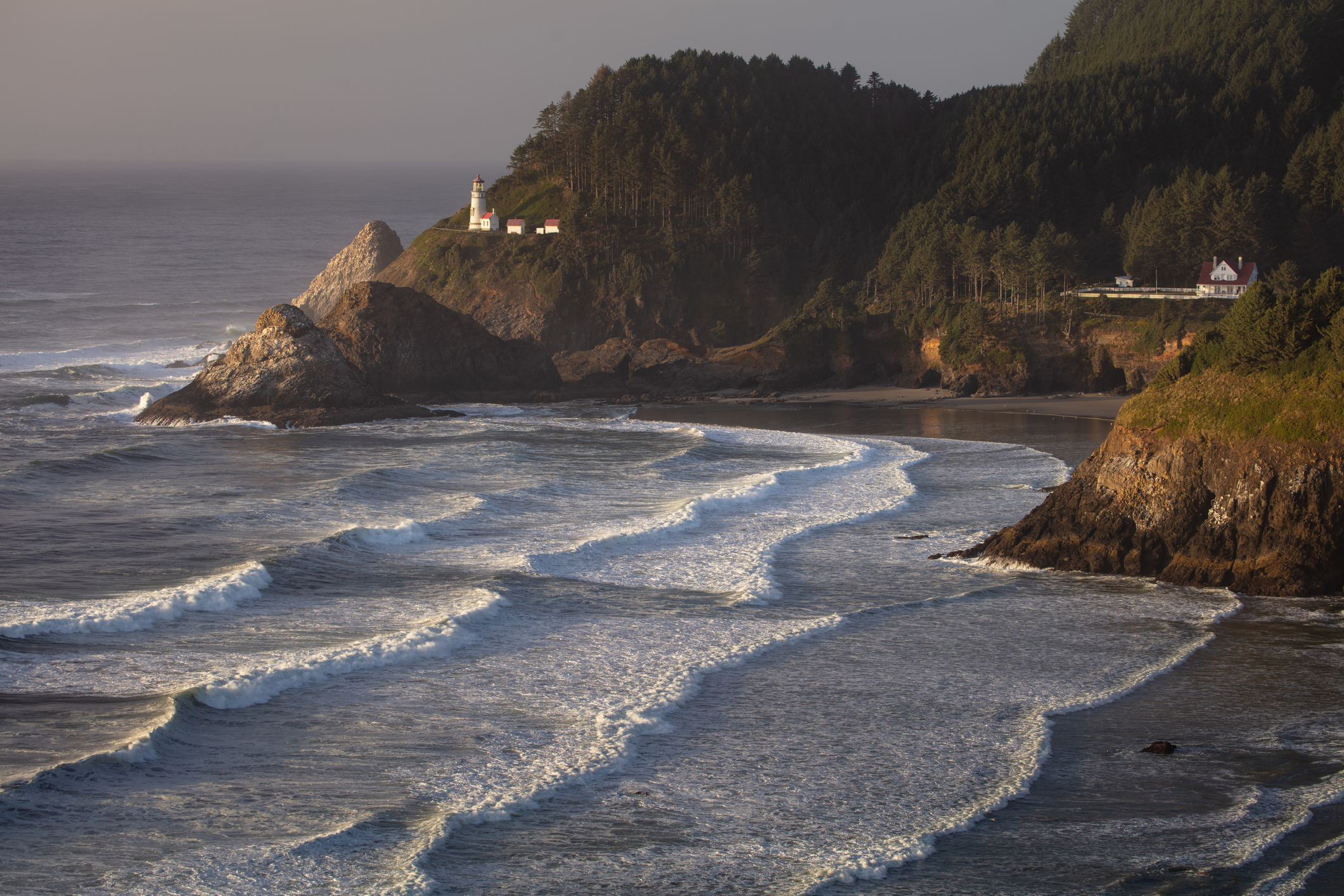
kjschoen/Getty
Winters are mild on Oregon’s Central Coast, where the lowest temps average 39 degrees in February. Fortunately, those chilly, rainy days keep away the crowds that swarm one of the Pacific Northwest’s most photographed spots in summer. Little do they know, the Heceta Head Lighthouse looks even dreamier when it’s draped in fog or during winter storms when the ocean crashes against the headlands. Camp out at nearby Carl G. Washburne Memorial State Park, which is fully kitted out with RV sites, showers, and firewood for sale. A short hike from your tent leads you under Route 101 to a 5-mile beach where you’ll spend days exploring tidepools and combing the sand for agate, while another pretty 3-mile path takes you straight to the lighthouse, rising from a 200-foot cliff. If it gets too cold, you could always book yourself into the 1890s innkeeper’s home, which now stands as an (allegedly haunted) bed-and-breakfast.
Mammoth Campground, Yellowstone National Park, WY
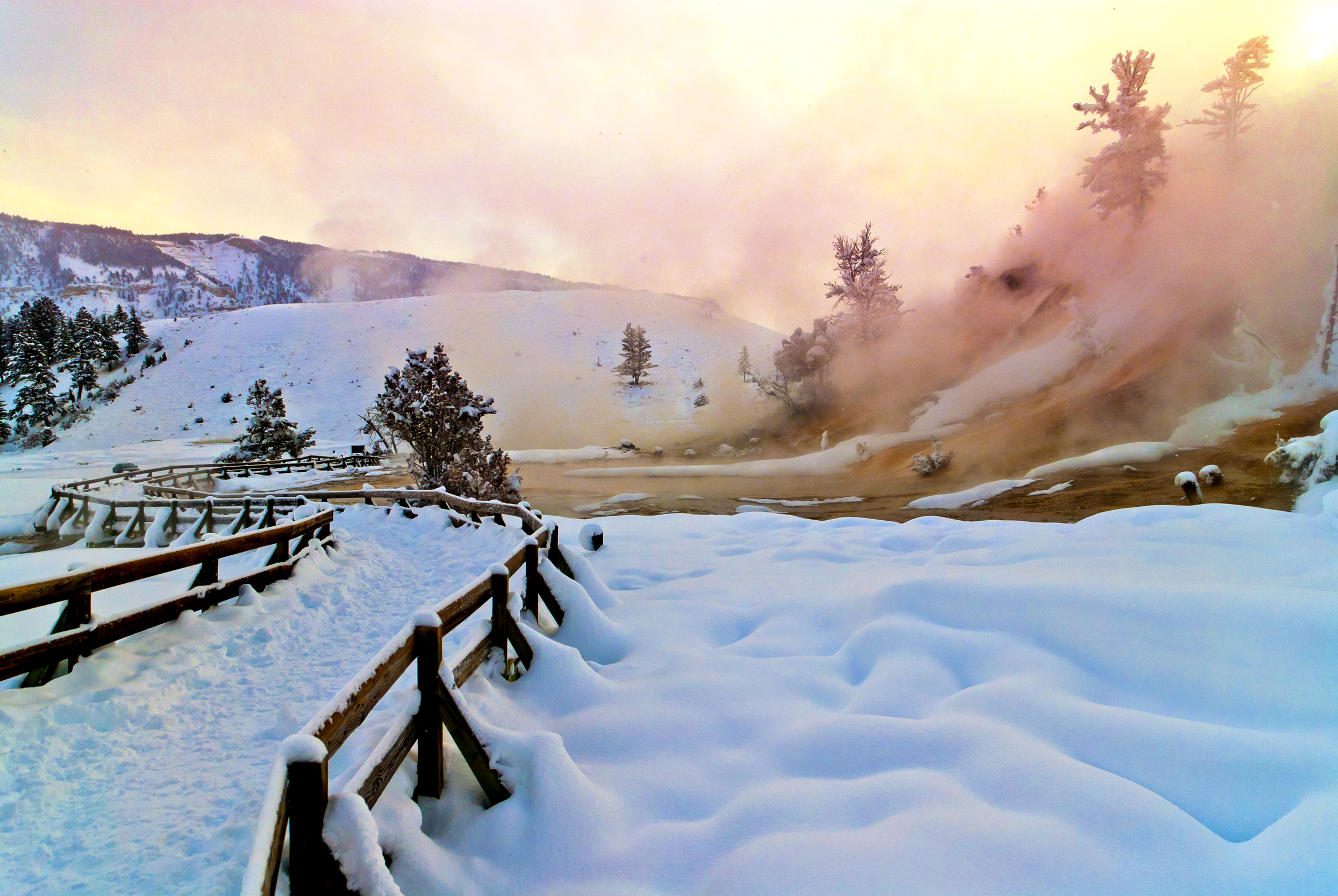
kwiktor/Getty
As far as winter wonderlands go, Yellowstone takes top honors. Not only are the rime-covered vistas incredible, but also the national park is one of the best places for winter wildlife watching. Lamar Valley, in particular, is often touted for its bison, elk, and moose, as the animals congregate at lower elevations. Yellowstone is famous for its wolves, and winter is the best time to see them, as well. The only campground that stays open is Mammoth—a spectacular place to see the contrast of the geysers against its snowy surroundings. You’ll also be less than 2 miles from the Boiling River, where you can warm up with a steamy dip. Backcountry camping is an option, too, for the hardiest of souls.
Brainard Lake Recreation Area, near Boulder, CO

evanbrogan/Getty
The mood is set from the moment you drive up the winding road that climbs up to 10,000-plus feet, backdropped by expansive vistas of the snow-coated Rockies. Not surprisingly, Brainard Lake is abuzz with snowshoers and cross-country skiers during the day. After the sun falls, the pristine wilderness will be all yours. Claim a spot at least one-quarter of a mile from the trails and 300 feet from any lakes. Around Lefthand Reservoir, you’ll find sheltered spots for dispersed camping and still be pretty close to your car if the weather turns. If you’re iffy on the how’s of winter camping and live in the area, book a class with Colorado Mountain Club. In the morning, get a head start on your winter adventures to beat the crowds at spots like the scenic Lake Isabelle (pictured).
Backcountry at Denali National Park, AK
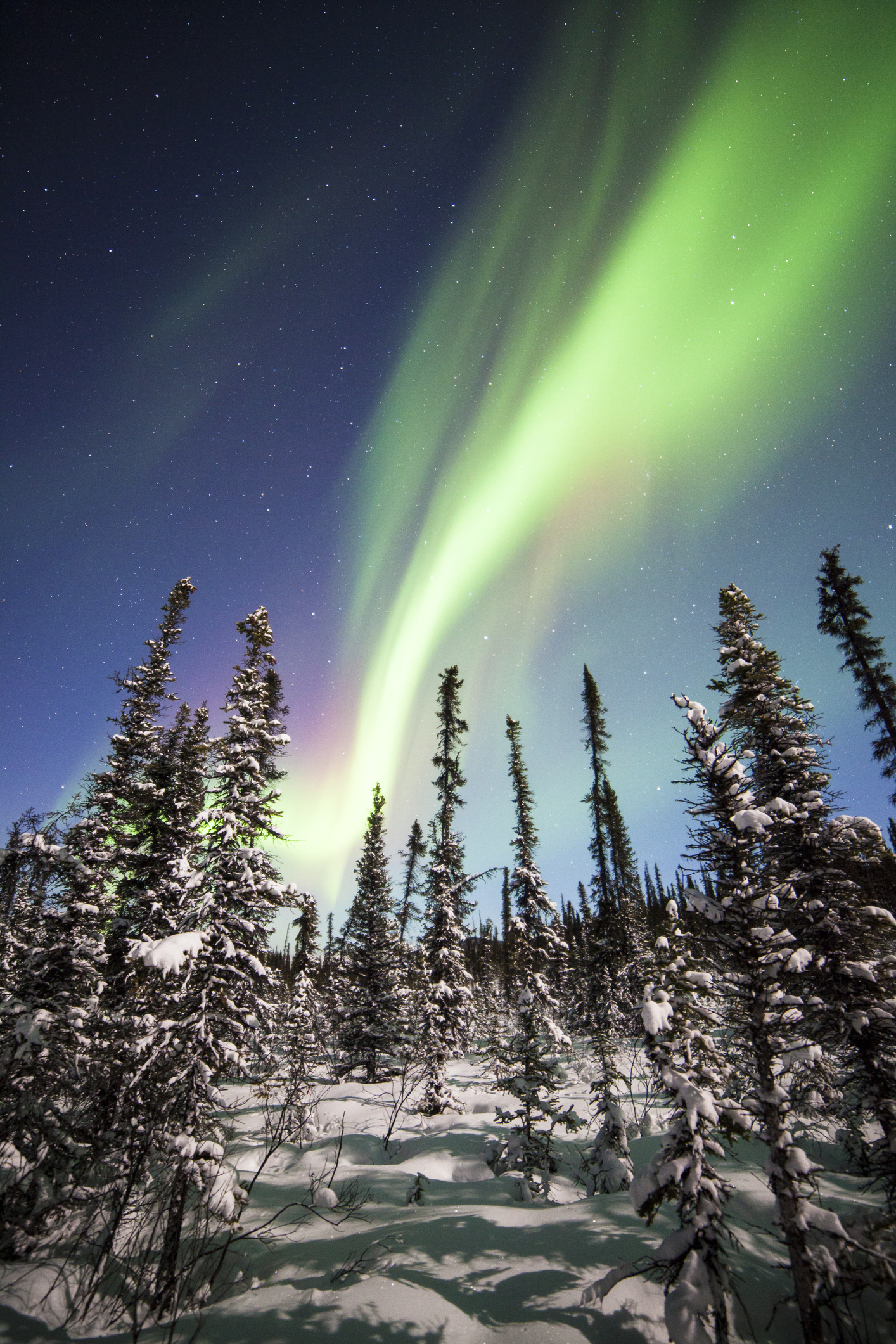
Daniel A. Leifheit/Getty
Winter camping in Alaska is not for the faint of heart and definitely not for those who are new to cold-weather camping. For seasoned adventurers, there are few better experiences than waking up in Denali: Imagine the imposing peaks completely blanketed in snow, hours-long sunrises and sunsets, a deafening silence, and, at night, the chance of seeing the northern lights dance overhead. The only campsite open from October to May is Riley Creek, near the entrance. Beyond that, you’ll be going backcountry with options to hire a dog sled team or helicopter to shuttle you out to a choice spot. Optimal conditions are found in March and April when you get close to 12 hours of sunshine and temps in the ’30s and ’40s. You always have the option of booking one of the three Byers Lake cabins, which feel remote but are warm and only require about half-mile trek to reach.
Reflection Lake, Mount Rainier, WA

Courtesy NPS/Kevin Bacher
Once the snow depth reaches two to five feet, you can set up camp just about anywhere around Washington’s iconic Fourteener. This is a good time to explore popular spots in the park, like Paradise and Glacier Point, which will be significantly less crowded. Dig out your snow cave or igloo at Reflection Lakes. It’s not too far from amenities at the Paradise Visitor’s Center. Cross-country ski to Paradise for sledding, ranger-led snowshoe hikes, and skiing and snowboarding. Back at camp, the elements can definitely be harsh. But there’s a warming hut and bathrooms in the parking lot, about a 2-mile snowshoe hike from the winter camping spot, and the view of Mt. Rainier from the lake is one of the most sought-after in the park.
Koke’e State Park, Kauai, HI

Westend61/Getty
Depending on your winter mood, you may just be looking to defrost. If that’s the case, there’s no better place to do it than Hawaii. The scenery at Koke’e is simply breathtaking—the epitome of an island paradise with dense forest, knife-edge peaks, red clay hills, and trout-stocked creeks. Waimea Canyon, known as the “Grand Canyon of the Pacific,” is the highlight, and you can get the best views when you hike the Kalalau Trail, which leads to amazing views of the 3,400-foot-deep canyon and the valley below stretching toward the mesmerizingly blue ocean. The entire trail runs 11 miles through some of the most pristine, rugged landscapes in Hawaii. But you only need to do the first two miles for the stunning vistas of the Nā Pali Coast. Sites in this park are barely developed, but you won’t care when you’re waking up in a rainforest at 4,000 feet.
White Sand Dunes National Park, NM

DavorLovincic/ Getty
For the look of a snowy winter camping adventure without the freezing temps, head to White Sands (which happens to be our newest national park!). Backcountry is the only type of camping allowed within this 176,000-acre dune field, and the best places to set up are directly among the dunes—just make sure the weather is placid and not windy when you visit. You’ll spend days hiking and sledding on the sugar-white hills and nights looking up at the starriest of skies. December through February, average temps range from 23 to 60 degrees, making for pleasant weather for adventuring.
Organ Pipe Cactus National Monument, AZ
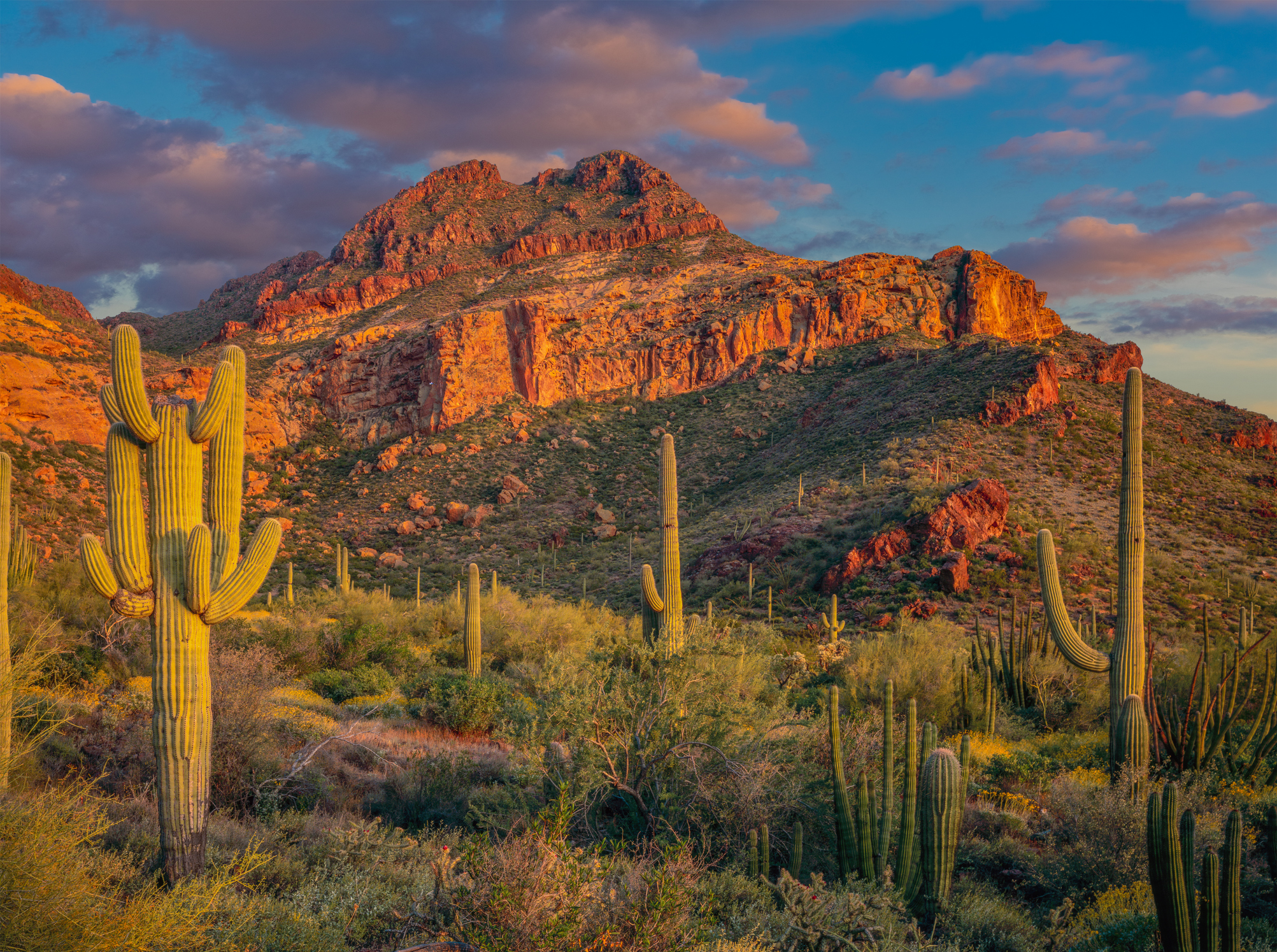
Ron and Patty Thomas/Getty
From Moab to Death Valley, any desert locale is going to be a solid bet this time of year. But since the weather is nicer, these places can also get crowded. Adventurous travelers should take the opportunity to go off-the-beaten-path at Organ Pipe. Solitude is the biggest perk of winter camping, and this national monument delivers it in spades. Located on the Mexican border, the under-the-radar park is about 120 miles from Phoenix, so it’s remote but accessible. As far as campgrounds go, Twin Peaks is the biggest and has solar showers. For a more rugged experience, book the Alamo Campground, which has only four sites, no water, and the prettiest sunset views. Cacti steal the show here. You’ll see thousands of them in just about every variety as you drive along the 21-mile Ajo Mountain Road or the 51-mile Puerto Blanco Loop.
Joshua Tree National Park, CA
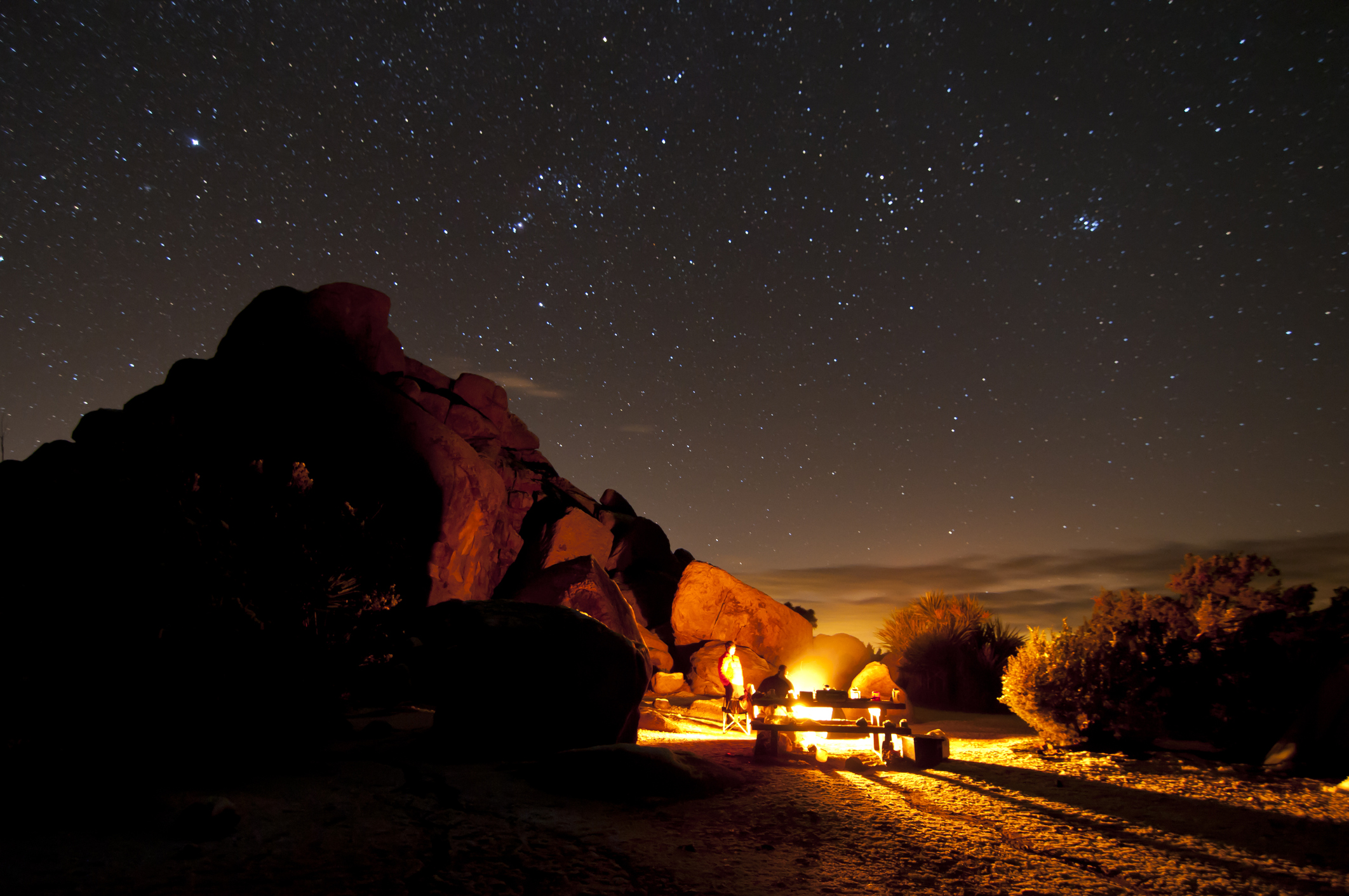
Joshua Bury Photography/Getty
Another stellar desert camping spot, Joshua Tree gets cold and windy enough in winter to deter the droves—though don’t expect complete solitude. This is a good time to try for a popular campground like Hidden Cove, which has 44 sites, laid out along a meandering road with large boulders providing privacy and stellar rock climbing options. More intimate, remote camping can be found at Belle or White Tank campgrounds. Nights get chilly and you might even get some snow, but it tends to disappear by morning, giving way to 60-degree days. Wildlife and wildflowers are also possible to see, as colorful warblers migrate through the park in winter and some flowers start to bloom in late February. Wherever you choose to pitch your tent, you’ll benefit from those epically dark Joshua Tree night skies.
San Elijo State Camp, San Diego, CA
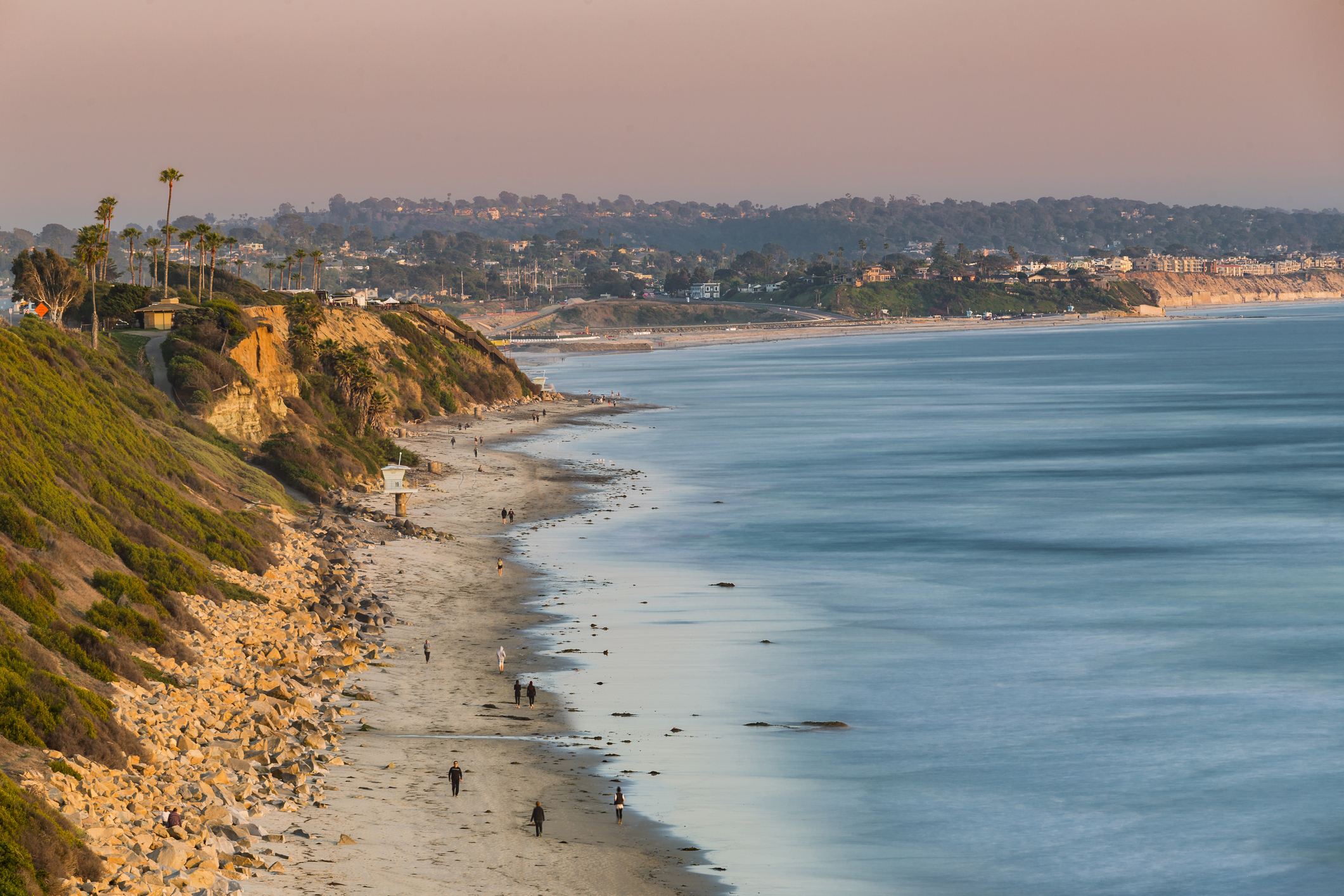
Marcel Fuentes/Getty
How often don’t we wish to wake up on the beach in the dead of winter? Make the dream a reality by hunkering down at San Elijo in San Diego. The popular surf spot has sites on a cliff overlooking the Pacific with a staircase that leads down to the sandy beach. Most days, there’s also a taco truck parked onsite, so you won’t go hungry. Weekends will likely be busy, but mid-week winter camping is pure bliss with minimal crowds. Perhaps the biggest perk of visiting December through March is in what you’ll see though: Sunsets are particularly spectacular this time of year and your chances are high of spotting gray whales migrating south.
